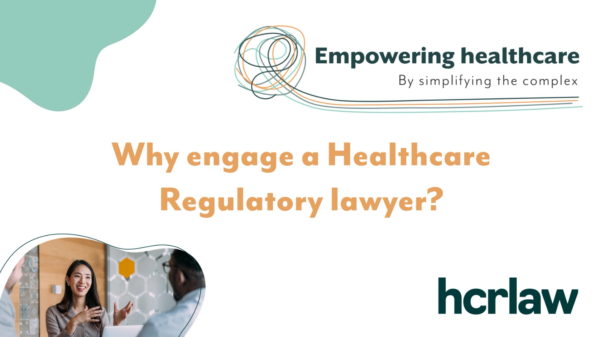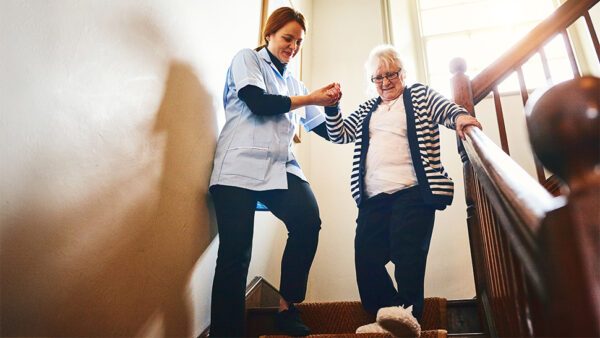

The long-awaited Penny Dash Report (“report”) was published on 15 October 2024 and has addressed the many issues the CQC are currently facing. The report aimed to examine the CQC’s recent shortfalls and the suitability of the Single Assessment Framework (“SAF”), which has struggled to reach the CQC’s expectations since its introduction in November 2023. The report found significant failings across the internal workings of the CQC, which it summarised into 10 conclusions:
- Poor operational performance
The CQC’s internal struggles has meant a fraction of registered organisations have been inspected compared to previous years. The report highlighted that 6,700 inspections were carried out in 2023, compared to 15,800 in 2019, exemplifying the poor operational performance of the CQC.
This has resulted in significant delays in reinspection, causing issues for care homes and other registered organisations which are currently rated ‘inadequate’ or ‘requires improvement’. Although these organisations are meant to be prioritised for reinspection, it is currently taking 136 days on average for organisations rated inadequate to be reinspected, compared to 87 days in 2015.
It is also taking 360 days on average for a ‘requires improvement’ rated care home to be reinspected, compared to 142 days in 2015. These ratings have severe impacts on the operation of the organisation, prolonging the negative commercial impact.
- Significant challenges with the provider portal and regulatory platform
The provider portal and regulatory platform were introduced to improve communication with providers, enable an insight-driven approach and highlight any emerging risks and support inspections.
However, issues with the system, including troubles accessing the portal and uploading documents, has caused providers and CQC employees alike significant frustration. The report also suggests that the issues have inhibited the CQC from properly introducing the SAF, since the portal and regulatory platform would have gone hand in hand with the new inspection regime.
- Delayed and poor-quality reports
In addition to delayed inspections, the report has stated that the CQC are experiencing significant delays in producing reports, with organisations waiting several months before receiving theirs.
There are also concerns around the quality of reports, which are described as poorly structured, disparate in tone and message, and reliant on a lengthy and complicated scoring system. Providers are therefore having difficulty extracting lessons from reports and are losing trust in the CQC’s expertise.
- Lost credibility in Health and Social Care (“HSC”) sector
Contributing to this lost trust is the 2023 internal restructuring of the CQC, which replaced a sectoral focus with integrated teams operating on a local level. This has led to an imbalance between teams, resulting in employees operating outside of their specialism. This lack of expertise has not only eroded trust in inspections and their outcomes, but also led to the deterioration of relationships between providers and CQC employees.
- Concerns around the SAF
- The SAF is insufficiently laid out on CQC website and communicated poorly
The report states that the SAF is poorly laid out on the CQC’s website and contains generic language, which perhaps exemplifies the confusion around the SAF. The report found that even CQC executives were unable to describe the framework, the rationale behind prioritising certain Quality Statements or the way ratings are calculated.
- Lacks descriptors of what ‘good’ looks like
The CQC has failed to exemplify what conduct falls into each of the ratings categories, meaning providers struggle to know what the inspectors are looking for. Providers struggle to learn from inspections how to conduct their organisation in accordance with best practice and understand what ‘good’ looks like. CQC inspectors also do not understand exactly what conduct falls within each rating, resulting in inconsistent ratings across different providers.
- Questions around data collection and use
The CQC has used data to collect information on patient experience, however there are concerns around how representative this data is. Although secondary data is collected from pre-existing surveys to gain an insight into user experience, the primary data collected by the CQC is often sourced through interviews with tens of service users within an organisation which cares for significantly more users. This can make the collected data unrepresentative of service user experience within the organisation.
- More can be done to support innovation in care delivery
The report found that less than 50% of providers believed that the CQC supports innovation or helps adoption of innovative technologies in care delivery. Providers feel that there is an insufficient focus on the encouraging, driving and supporting of innovation, leading care delivery to stagnate.
- Insufficient attention paid to ‘effectiveness’ of care
The report found that significant focus is given to the ‘safe’ key question as opposed to the other key questions. The report suggests that the ‘effective’ key question is not given the consideration it deserves, perhaps signifying a lack of focus on the impact and outcomes of care. The current disparity shows a failing to recognise the importance of a key question which essentially focuses on how well a provider is caring for their service users.
- No reference to efficient delivery of care
The SAF also fails to consider how efficient providers are with their resources in the delivery of care. An efficient use of resources may enable a provider to care for more service users and provide better quality care. By ignoring this, the CQC have created a significant gap in their assessments.
- Little reference to the challenge of balancing risk and high-quality care
Providers feel aspects of care are assessed in isolation, rather than considering how an approach will impact other areas of care, staff or service users. Providers often balance benefits against potential risks when deciding on approaches, and the CQC ought to consider this in their analysis.
- Unclear ratings and disproportionate weighting to previous inspections
The report raised concerns about the influence of previous inspections on current ratings. The SAF was implemented to minimise the use of previous inspections by encouraging frequent inspections. However, since the CQC are inspecting at a significantly lower frequency than normal, the SAF has failed in this objective.
Understandably, this has made providers feel that it is more difficult to change ratings, since the current running of the service may be overshadowed by previous findings. Providers may feel a sense of optimism, however, as the CQC has stated that they are working on improving the transparency around how ratings are calculated without relying on old ratings.
- and 8. Opportunities to improve assessment of local authority Care Act duties and concerns around Integrated Care System assessments
The Health and Care Act 2022 introduced a duty for the CQC to assess local authorities (“LA”) and integrated care systems (“ICS”), although this has not completely got off the ground. There are concerns around LA assessments and the development of ICS assessments which are largely synonymous with the concerns around the CQC assessment of providers, such as unrepresentative data, lack of team expertise in areas, and insufficient descriptors of what ‘good’ looks like.
- Do more to support and improve the HSC Sector
Providers have voiced their concern around the lack of support from the CQC in improving the sector. It’s been acknowledged that the CQC are not an improvement body, but they are still in a position to inspire change in the sector through a clearer description of best practice and greater sharing of innovative technologies and approaches.
- Improve sponsorship relationship with Department of Health and Social Care
Finally, the report suggested that an improved relationship between the CQC and their sponsor, the Department of Health and Social Care, can inspire accountability, making CQC services more efficient and effective.
The Penny Dash Report recommendations
The report followed these findings with seven recommendations to improve areas of concern:
- Improving operational performance, the provider portal and reports’ quality
- Rebuild expertise within teams and improve relationships with providers
- Better description of the SAF and focus on all key questions
- Clarify how ratings are calculated
- Continue to improve LA assessments
- Pause the roll-out of ICS assessments
- Strengthen sponsorship relationship.
The report goes on to suggest how these can be achieved with action from the CQC. The CQC have responded to the report and taken accountability for their shortcomings. They have already committed to improving several areas focused on in the Report, including restructuring their leadership roles, amending quality statements in the SAF, fixing the provider portal and determining what ‘good’ looks like.
The report and the response from the CQC can be a source of encouragement that the CQC will begin to resolve its internal issues and inspire change.










